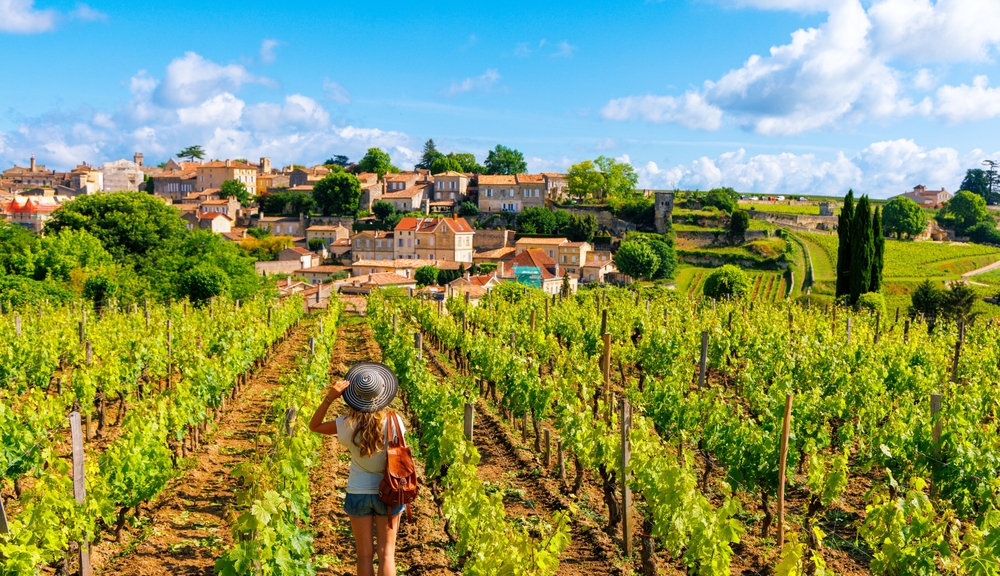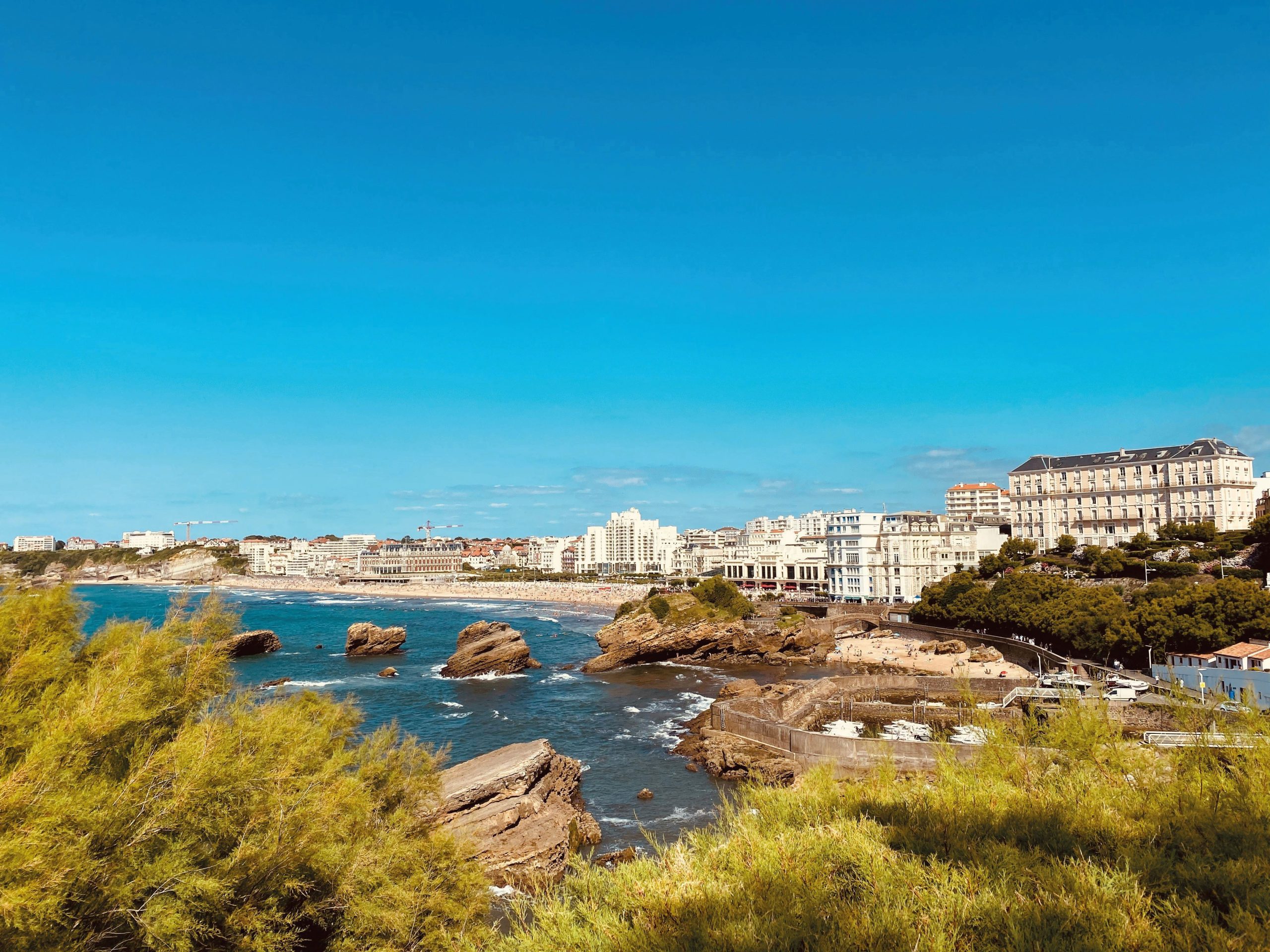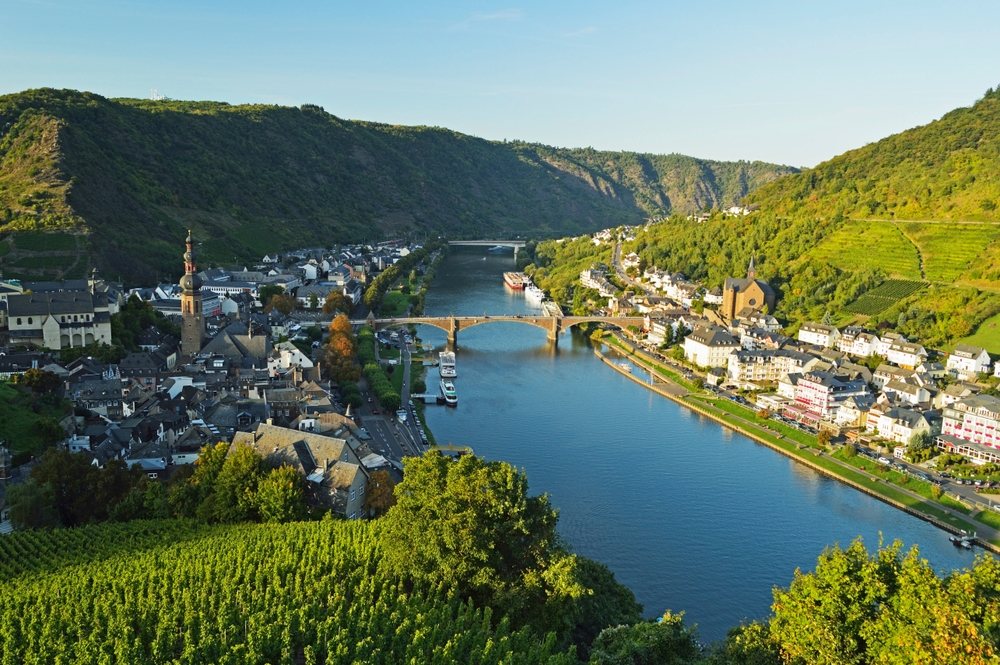
10 April 2025
The Moselle : tracing the roots of cultural diversity
Moselle, a French department in the Grand Est region, has a unique identity influenced by its proximity to Germany and Luxembourg, which have shaped its architecture, history and traditions.
Cover photo: View of the Cochem River in Moselle © shutterstock / Robert Harding Video
At the crossroads of France, Luxembourg and Germany, Moselle embodies a unique history of cultural fusion. Having been alternately French and German, the region bears the lasting traces of both influences: a Franconian dialect that is still spoken today and architecture that blends German neo-Gothic and French classicism. This dual culture has shaped Moselle’s identity. Its turbulent past has produced a region rich in contrasts, where German and French styles interwine to form a living bridge between two worlds. This article invites you to explore the places in Moselle where traces of this great history still endure.
Moselle’s French identity rooted in its heritage
This department nestled in the Grand Est region, preserves part of its French identity despite Germanic influences, and heritage visible in its architectural monuments.
The Saint-Etienne Cathedral, with its typical French style
Saint-Étienne Cathedral in Metz is one of the jewels of French Gothic architecture. It is known as the Lantern of God because of its exceptional stained-glass windows, which fill the building with light and give it an almost mystical aura. It is a remarkable architectural achievement, with nearly 6,500 square metres of stained-glass windows, among the largest collections of ancient stained glass in Europe.
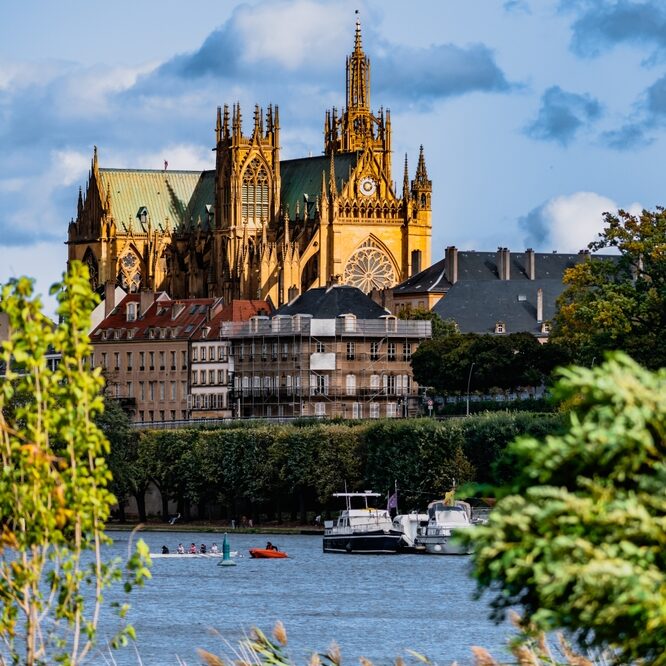
Some of the panels are signed by the great French artist Chagall, further enhancing the artistic and symbolic significance of the site. Saint-Étienne Cathedral is distinguished by its monumental nave, rising to a height of 41 metres, making it one of the tallest in France. Its soaring height powerfully conveys the spiritual ambition of the Gothic style. While affirming its French architectural identity, it also embodies Metz’s historical roots in the Kingdom of France before its annexation by Germany in 1871.
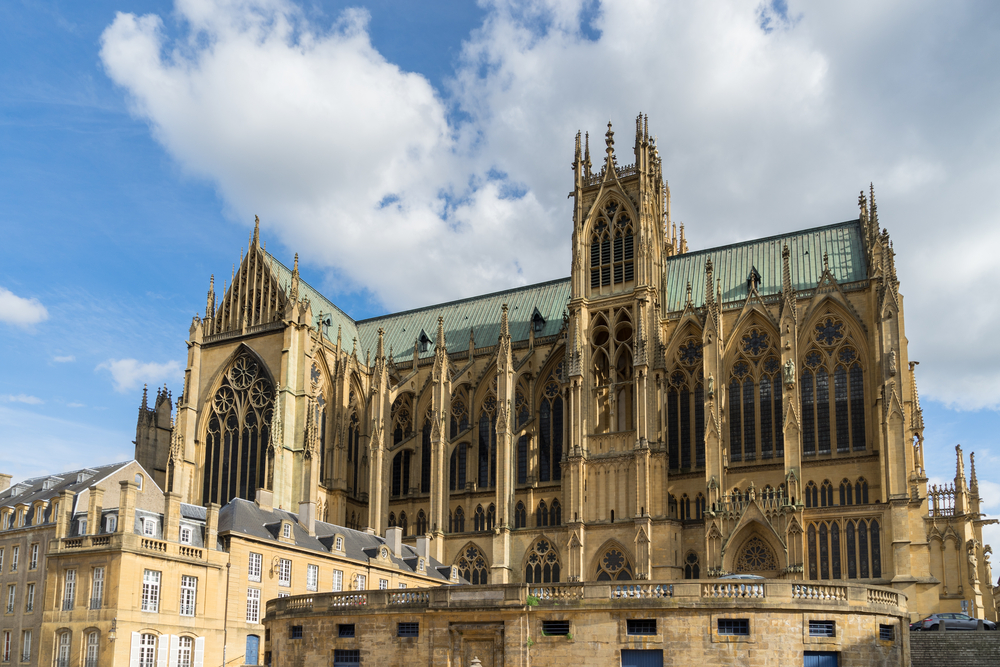
The cathedral also has one of the oldest organs in France, dating back to 1537. This historic instrument is part of the exceptional musical heritage of Moselle, France’s second-ranked department for the number of organs. It’s part of the Moselle Organ Trail, a route created to promote, maintain, and showcase this unique heritage.
The Château de Sierck, a French medieval castle
Also known as the Castle of the Dukes of Lorraine, the fortified site of Sierck-les-Bains stands on a rocky promontory overlooking the Moselle valley, at the border with Luxembourg and Germany. Nestled in lush green countryside, this thousand-year-old castle, whose origins date back to the 11th century, was one of the favourite residences of the Dukes of Lorraine until the 17th century.
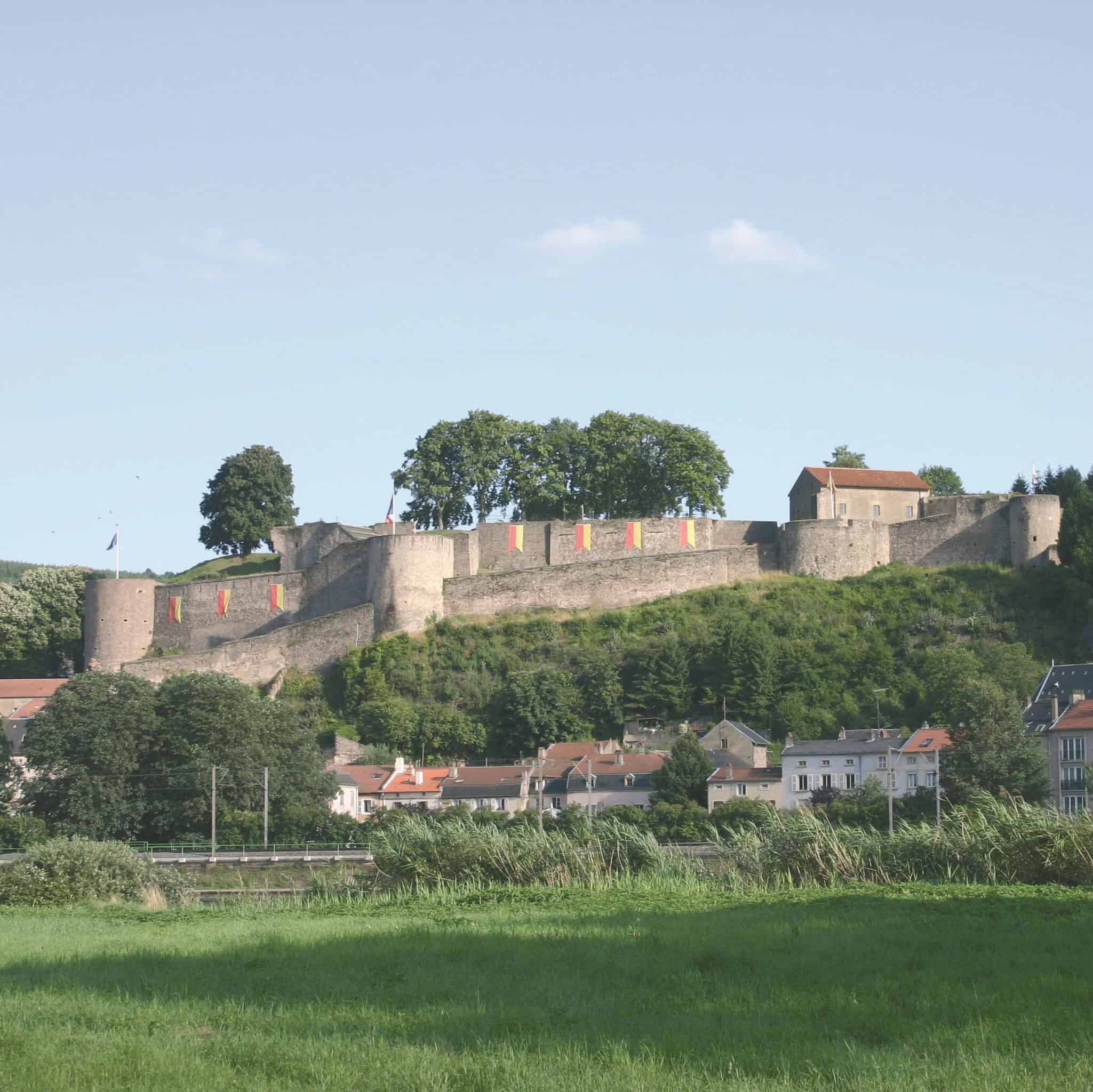
Its architecture blends harmoniously with the landscape: an oval enclosure, massive towers and stone walls that tell a story shaped by the centuries at every turn. Transformed and embellished over time, it now stands as a remarkable testimony to the evolution of French architecture.
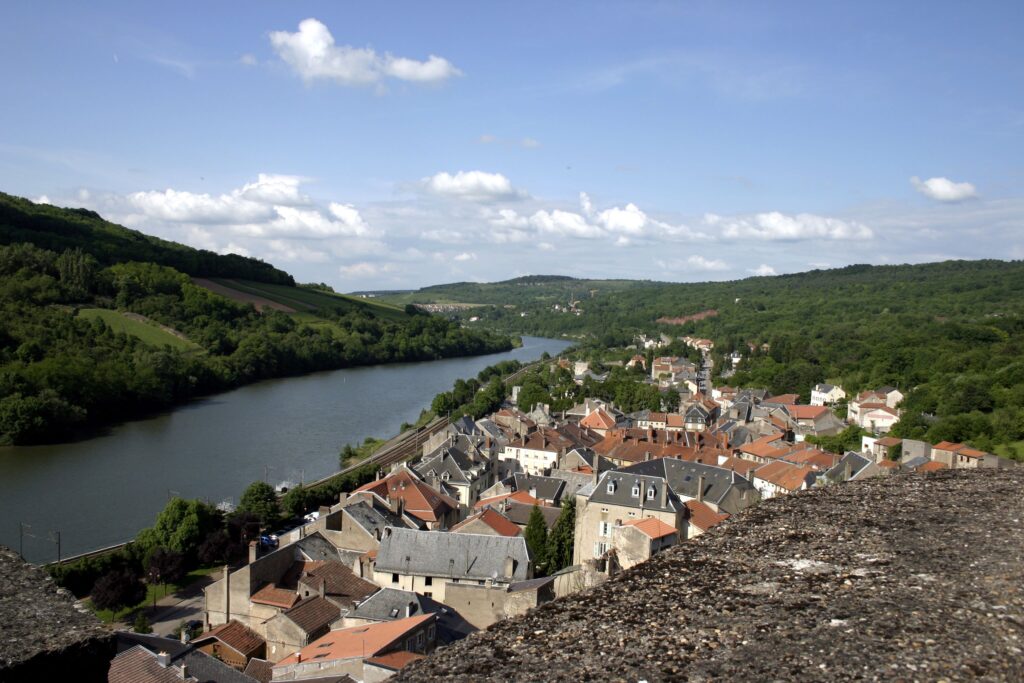
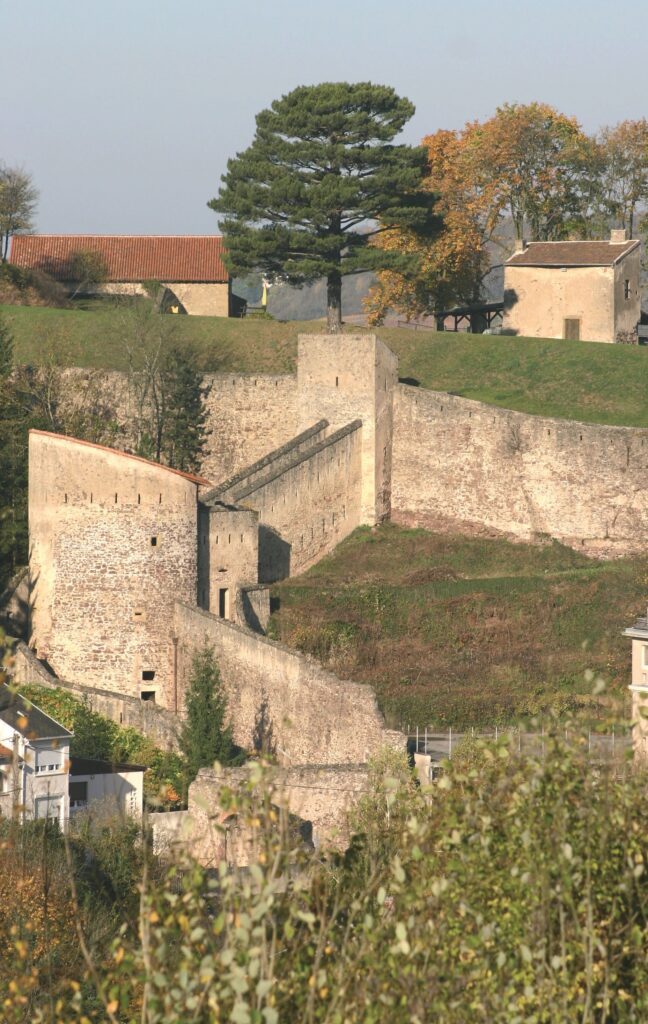
Beyond its past, the castle charms you with its unique atmosphere: exceptional views of the Moselle, walks among the ruins, temporary exhibitions and historical events. Immerse yourself in a setting that combines history, landscape and vibrant culture.
The oldest theatre in France
Take a break in Metz on your way through the Moselle region. The ‘golden city’ is home to the oldest theatre in France. The Metz Opera Theatre, built in the 18th century, is still in use today, 700 years after it was first opened. It stands in the heart of the Moselle region, having witnessed changes in eras and rulers. In the 19th century, major plays by Victor Hugo, such as Hernani, were performed here shortly after their Paris premieres.
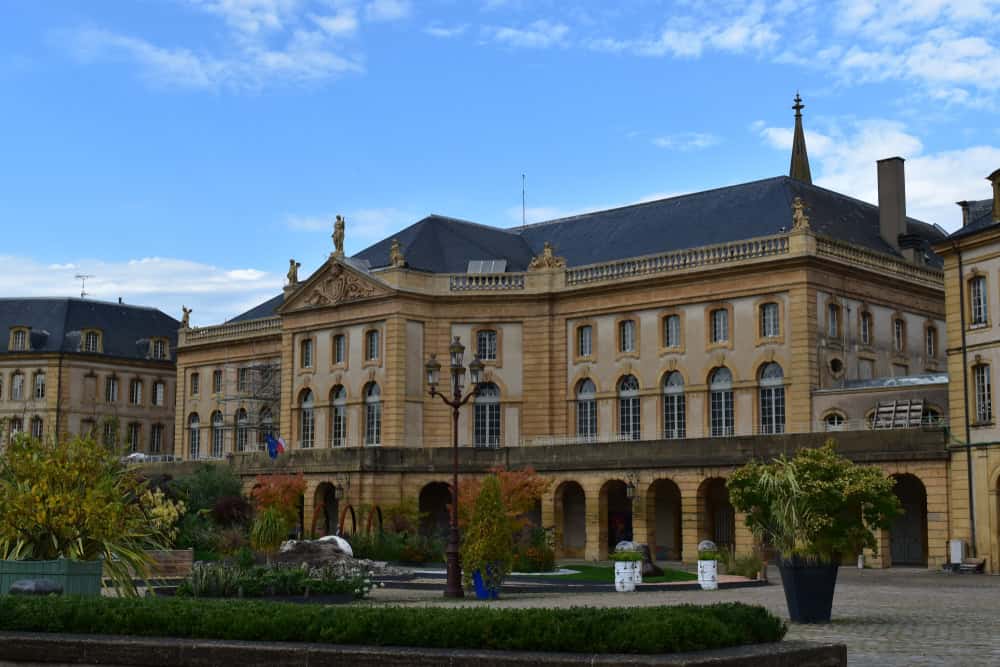
As Victor Hugo said: ‘The theatre is a point of view. Everything that exists in the world, in history, must and can be reflected there.’ A wonderful stopover and a great quote as you explore the history of the Moselle. But now it’s time to head back to the German side…
German influence in the streets of Moselle
While in Metz, spend some time visiting the city, as there are other attractions to discover…
The medieval quarter of Metz, symbol of annexation
Reinvented by Emperor Wilhelm II at the end of the 19th century, this quarter has preserved the memory of nearly fifty years of German rule in France. But far from being frozen in time, this era has left a lasting mark on the neighbourhood’s visual and cultural identity: narrow streets and half-timbered houses stand alongside massive buildings with a Germanic appearance, where golden Jaumont stone meets neo-Romanesque austerity. Far from being a historical stroll, the neighbourhood reveals a city rebuilt with opulence to assert the power of the German Empire, blending local heritage and imperial ambition. rigueur néo-romane. Loin d’une promenade historique, le quartier révèle une ville reconstruite avec faste pour affirmer la puissance de l’Empire allemand, mêlant patrimoine local et ambition impériale.
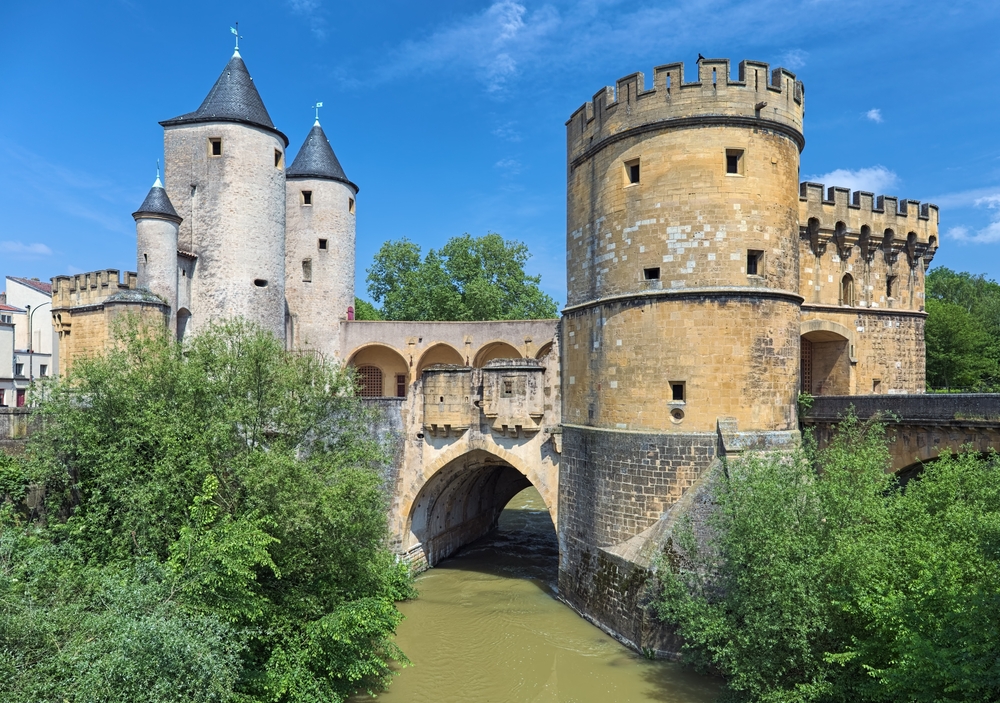
As you wander through the city, you’ll come across medieval shops and take in spectacular views of the Neue Stadt (“new town” in German), as if Metz were still caught between two cultures. It’s a journey into a suspended world, where echoes of the Holy Roman Empire and dreams of grandeur intersect at every street corner, a fragment of Alsace-Lorraine, where Europe’s story is written on the walls.
A Journey Through time: the Citadel of Bitche
No, this is not an insult, but a medieval town nestled in the Grand Est region. Dominating the rolling landscapes of the town of Bitche, the eponymous citadel, a 17th-century masterpiece by Vauban, seems to rise out of the rock itself, powerful and serene at the same time. In 1870, it was the heart of the Moselle resistance against the German and Prussian assaults, embodying the region’s fierce attachment to its identity.

Today, through an immersive and poignant tour, its bastions recount the story of a heroic siege and a contested territory. The Citadel of Bitche offers a powerful experience of its underground passages through a cinematic journey. Equipped with headphones, you are led by the voices of soldiers from a docu-fiction series, projected in episodes along the route, depicting the siege of 1870 to 1871.
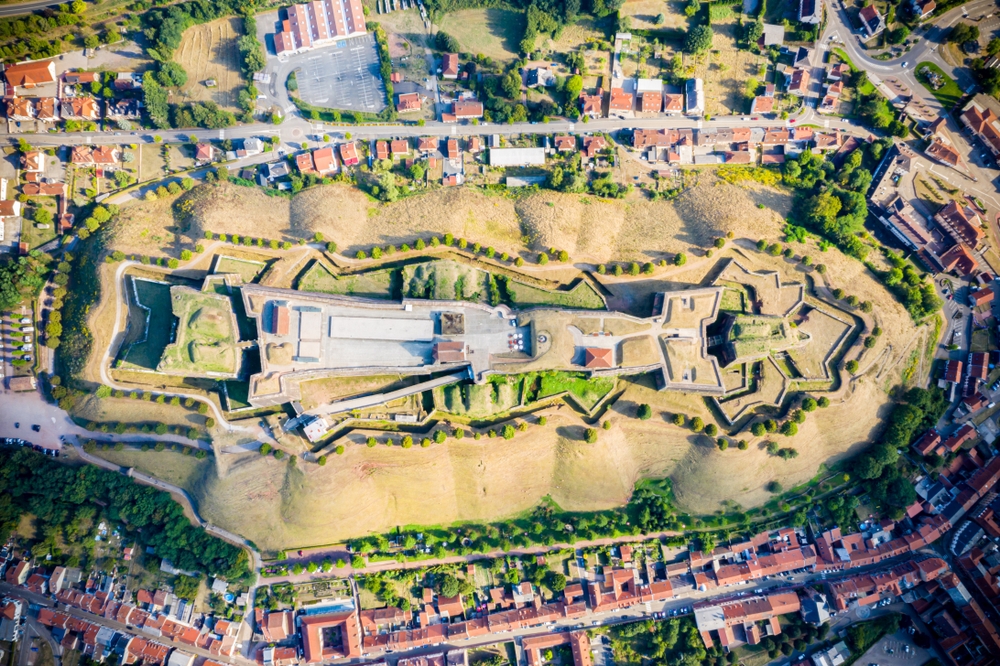
After this immersion, the upper plateau of the citadel offers you an exceptional panorama of the Northern Vosges. On the way down, the Jardin pour la Paix (Garden for Peace), located at the foot of the citadel, invites you to relax in a green setting covering almost 500 metres.
Moselle is a land of open-air history, where every stone bears witness to centuries of conflict and coexistence. To explore even more places steeped in history and culture, discover our Teritoria hotels and restaurants in the region, as well as other authentic places and experiences available on our gift shop. For more inspiring stories, subscribe to our newsletter for free. If you’re already convinced, find out how you can get a refund on part of your next experience with our loyalty programme.
By Emilie Fallot Nguyen
